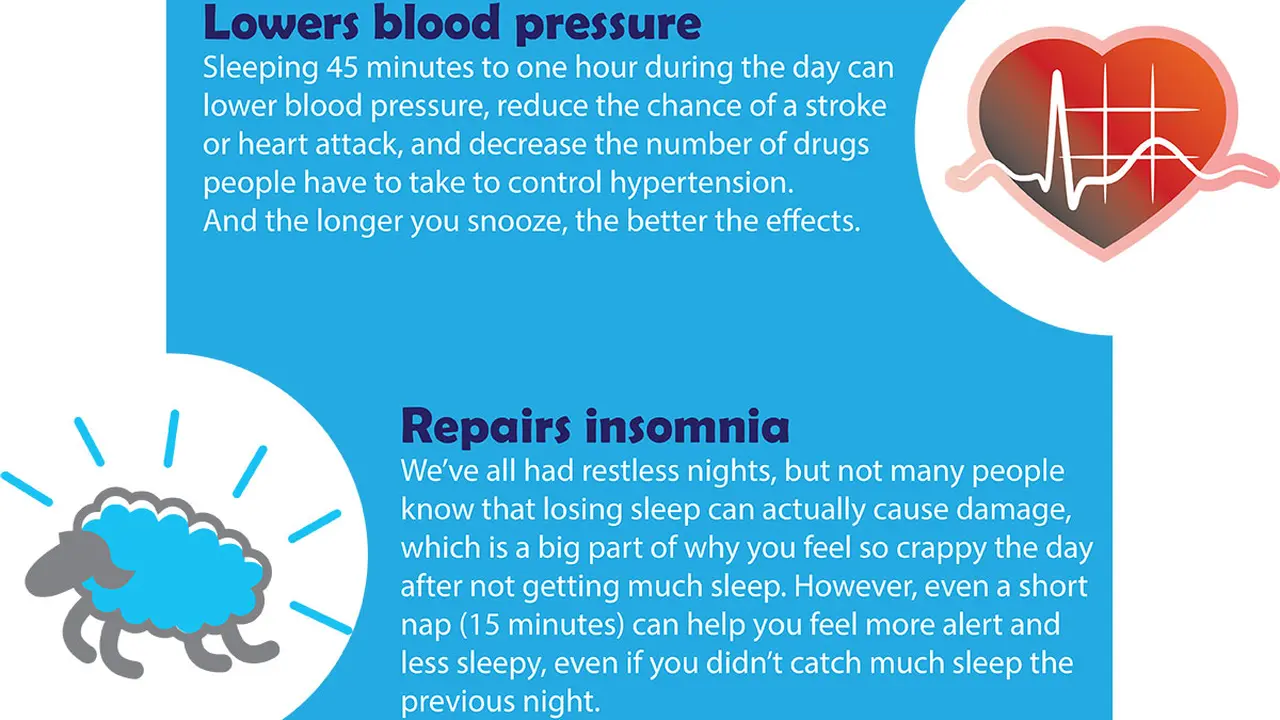The Benefits of Napping: How to Nap for Optimal Results

meta description: Learn how to create a sustainable lifestyle and adopt eco-friendly practices. This guide covers essential tips for reducing your environmental impact. Contribute to a healthier planet and improve your well-being with sustainable living.
Understanding Sustainable Living and its Environmental Impact Key Concepts
Sustainable living is more than just a trend; it's a conscious choice to minimize your impact on the planet and live in harmony with nature. It's about meeting our present needs without compromising the ability of future generations to meet their own needs. This involves making informed decisions about everything from the products we buy to the energy we consume and the waste we generate.
Think of it like this: the Earth is a giant bank account, and we've been withdrawing way more than we've been depositing. Sustainable living is about changing our spending habits and starting to invest back into the account to ensure it remains healthy for everyone. This means reducing our carbon footprint, conserving resources, and protecting biodiversity.
The environmental impact of unsustainable living is staggering. It contributes to climate change, deforestation, pollution, and resource depletion. Climate change, driven by greenhouse gas emissions from burning fossil fuels and other human activities, is causing rising sea levels, extreme weather events, and disruptions to ecosystems. Deforestation, driven by agriculture, logging, and urbanization, is destroying habitats and reducing the Earth's ability to absorb carbon dioxide. Pollution, from industrial processes, agriculture, and waste disposal, is contaminating our air, water, and soil. Resource depletion, driven by overconsumption, is exhausting our supplies of essential resources like water, minerals, and fossil fuels.
Tips for Reducing Your Carbon Footprint Energy Conservation Techniques
One of the most significant ways to embrace sustainable living is by reducing your carbon footprint. This means minimizing the amount of greenhouse gases you release into the atmosphere through your daily activities. Here are some practical tips to get you started:
- Optimize Home Energy Usage: Switch to energy-efficient LED lighting. These bulbs use significantly less energy than traditional incandescent bulbs and last much longer. Consider investing in a smart thermostat like the Nest Learning Thermostat (Approx. $250) or the Ecobee Smart Thermostat with Voice Control (Approx. $200). These thermostats learn your habits and automatically adjust the temperature to save energy. During winter, lowering your thermostat by just a few degrees can make a noticeable difference in your energy bill. During summer, use fans to circulate air and reduce your reliance on air conditioning.
- Reduce Transportation Emissions: Walk, bike, or use public transportation whenever possible. If you need to drive, consider carpooling or switching to a more fuel-efficient vehicle. Electric vehicles (EVs) like the Tesla Model 3 (Approx. $45,000) or the Nissan LEAF (Approx. $30,000) are a great option for reducing your transportation emissions. Hybrid vehicles like the Toyota Prius (Approx. $25,000) offer a good balance of fuel efficiency and affordability. Before purchasing a new car, compare the fuel economy ratings of different models to make an informed decision. When driving, avoid aggressive acceleration and braking, which can significantly reduce fuel efficiency. Keep your tires properly inflated to improve gas mileage.
- Eat Sustainably: Reduce your consumption of meat, especially beef, which has a high carbon footprint. Focus on plant-based meals and locally sourced produce. Growing your own fruits and vegetables can further reduce your carbon footprint and provide you with fresh, healthy food. Support local farmers and farmers' markets. Consider joining a community-supported agriculture (CSA) program to receive a weekly box of fresh, seasonal produce. Reduce food waste by planning your meals, storing food properly, and composting food scraps.
Conserving Resources Water Conservation Strategies
Water is a precious resource, and conserving it is essential for sustainable living. Here are some ways to reduce your water consumption:
- Install Water-Efficient Fixtures: Install low-flow showerheads and faucets. These fixtures use less water without sacrificing performance. Consider the Niagara Earth Massage Showerhead (Approx. $15) or the Delta Faucet Company Single Handle Bathroom Faucet (Approx. $50). Replace old toilets with dual-flush toilets that allow you to use less water for liquid waste. The American Standard Cadet 3 Dual Flush Toilet (Approx. $200) is a popular option. Fix leaky faucets and toilets promptly. Even a small leak can waste a significant amount of water over time. Check your plumbing regularly for leaks and repair them as soon as possible.
- Water Wisely Outdoors: Water your lawn and garden early in the morning or late in the evening to reduce evaporation. Use a soaker hose or drip irrigation system to deliver water directly to the roots of plants. Collect rainwater in rain barrels to use for watering your garden. Consider the Good Ideas RWKIT-50 Rain Wizard Rain Barrel (Approx. $80). Choose drought-tolerant plants for your landscaping. These plants require less water and are better suited to dry climates. Avoid overwatering your lawn. Lawns typically need only about one inch of water per week.
- Practice Water-Saving Habits: Take shorter showers. Turn off the water while brushing your teeth. Run your dishwasher and washing machine only when they are full. Avoid using the garbage disposal, which can waste water and energy. Collect the water you use while waiting for the shower to warm up and use it to water your plants.
Reducing Waste and Embracing Recycling Waste Reduction Methods
Reducing waste and recycling are crucial components of sustainable living. Here are some strategies to minimize waste and maximize recycling:
- Reduce, Reuse, Recycle: Follow the "reduce, reuse, recycle" mantra. Reduce your consumption of disposable products by choosing reusable alternatives. Bring your own reusable bags to the grocery store. Use reusable water bottles and coffee cups. The Hydro Flask Water Bottle (Approx. $35) and the Contigo Travel Mug (Approx. $20) are popular options. Reuse containers and packaging whenever possible. Recycle paper, plastic, glass, and metal. Check your local recycling guidelines to ensure you are recycling properly.
- Compost Food Scraps: Composting is a great way to reduce food waste and create nutrient-rich soil for your garden. You can compost food scraps, yard waste, and paper products. Consider using a compost bin like the FCMP Outdoor Tumbling Composter (Approx. $100) or a worm composting system like the Worm Factory 360 (Approx. $120).
- Buy in Bulk: Buying in bulk reduces packaging waste and can save you money. Look for stores that offer bulk bins for grains, nuts, seeds, and other dry goods.
- Avoid Single-Use Plastics: Single-use plastics are a major source of pollution. Avoid using plastic bags, straws, utensils, and other disposable plastic items. Bring your own reusable alternatives. Consider using beeswax food wraps like the Bee's Wrap Reusable Food Wraps (Approx. $20) instead of plastic wrap.
Choosing Eco-Friendly Products and Sustainable Consumption Eco-Friendly Product Selection
The products we buy have a significant impact on the environment. By choosing eco-friendly products, we can reduce our environmental footprint and support sustainable businesses. Here are some tips for selecting eco-friendly products:
- Look for Eco-Labels and Certifications: Look for eco-labels and certifications such as Energy Star, Fair Trade, USDA Organic, and Green Seal. These labels indicate that a product has met certain environmental or social standards.
- Choose Products Made from Sustainable Materials: Look for products made from recycled materials, bamboo, organic cotton, or other sustainable materials. Avoid products made from virgin plastic or wood from endangered forests.
- Support Local and Ethical Businesses: Support local businesses that prioritize sustainability and ethical labor practices. Look for companies that are transparent about their supply chains and environmental impact.
- Consider the Product's Lifecycle: Think about the entire lifecycle of a product, from its raw materials to its disposal. Choose products that are durable, repairable, and recyclable.
- Examples of Eco-Friendly Products:
- Cleaning Products: Choose natural and biodegradable cleaning products like Seventh Generation Dish Soap (Approx. $4) or Mrs. Meyer's Clean Day Multi-Surface Everyday Cleaner (Approx. $5).
- Personal Care Products: Look for organic and cruelty-free personal care products like Dr. Bronner's Pure-Castile Soap (Approx. $15) or Pacifica Beauty Vegan Collagen Recovery Face Cream (Approx. $20).
- Clothing: Choose clothing made from organic cotton, hemp, or recycled materials. Support brands that prioritize fair labor practices.
Protecting Biodiversity and Supporting Local Ecosystems Biodiversity Conservation
Protecting biodiversity is essential for the health of our planet. Here are some ways to support local ecosystems and protect biodiversity:
- Plant Native Species: Plant native trees, shrubs, and flowers in your yard. Native plants provide habitat and food for local wildlife. Avoid planting invasive species, which can outcompete native plants and disrupt ecosystems.
- Create a Wildlife-Friendly Habitat: Provide food, water, and shelter for wildlife in your yard. Install bird feeders, bird baths, and nesting boxes. Leave leaf litter and dead wood in your yard to provide habitat for insects and other invertebrates.
- Reduce Pesticide Use: Pesticides can harm beneficial insects and other wildlife. Reduce your use of pesticides by using natural pest control methods. Attract beneficial insects like ladybugs and lacewings to your garden.
- Support Conservation Organizations: Support local and national conservation organizations that are working to protect biodiversity and conserve natural habitats.
- Advocate for Environmental Policies: Advocate for environmental policies that protect biodiversity and promote sustainable land management.
Sustainable Transportation Alternatives and Commuting Options
Transportation is a major contributor to greenhouse gas emissions. Here are some sustainable transportation alternatives to consider:
- Walking and Biking: Walking and biking are the most sustainable forms of transportation. They are good for your health and the environment.
- Public Transportation: Public transportation such as buses, trains, and subways can reduce your carbon footprint compared to driving alone.
- Carpooling: Carpooling with colleagues or friends can reduce the number of cars on the road and save you money on gas.
- Electric Vehicles (EVs): Electric vehicles produce zero emissions and can be charged using renewable energy sources. The Tesla Model 3 (Approx. $45,000) and the Nissan LEAF (Approx. $30,000) are popular EV options.
- Hybrid Vehicles: Hybrid vehicles combine a gasoline engine with an electric motor, offering improved fuel efficiency. The Toyota Prius (Approx. $25,000) is a popular hybrid option.
Embracing Minimalism and Conscious Consumption Lifestyle Changes
Minimalism is a lifestyle that emphasizes simplicity and conscious consumption. It's about owning less stuff and focusing on experiences and relationships. Here are some ways to embrace minimalism and conscious consumption:
- Declutter Your Home: Get rid of items you no longer need or use. Donate them to charity or sell them online.
- Buy Less Stuff: Before buying something new, ask yourself if you really need it. Avoid impulse purchases.
- Choose Quality over Quantity: Invest in durable, well-made products that will last longer. Avoid buying cheap, disposable items.
- Borrow or Rent Items: Borrow or rent items you only need occasionally, such as tools or equipment.
- Repair Items Instead of Replacing Them: Repair broken items instead of replacing them.
Engaging in Community and Advocacy for Sustainability Community Involvement
Sustainable living is not just an individual effort; it requires community involvement and advocacy. Here are some ways to engage in community and advocate for sustainability:
- Join a Local Environmental Group: Join a local environmental group or organization and participate in their activities.
- Volunteer for Environmental Causes: Volunteer for environmental causes such as tree planting, river cleanups, or community gardening.
- Attend Public Hearings and Meetings: Attend public hearings and meetings on environmental issues.
- Contact Your Elected Officials: Contact your elected officials and advocate for environmental policies.
- Spread Awareness: Educate your friends, family, and neighbors about sustainable living.
Sustainable Home Improvement and Green Building Materials Eco-Friendly Construction
If you're planning a home renovation or building a new home, consider using sustainable building materials and eco-friendly construction techniques. Here are some options:
- Recycled and Reclaimed Materials: Use recycled and reclaimed materials such as reclaimed wood, recycled glass, and recycled metal.
- Sustainable Wood: Choose wood that is certified by the Forest Stewardship Council (FSC). FSC-certified wood comes from responsibly managed forests.
- Energy-Efficient Windows and Doors: Install energy-efficient windows and doors to reduce energy loss.
- Insulation: Use insulation made from recycled materials or natural fibers such as cellulose or sheep's wool.
- Low-VOC Paints and Finishes: Use low-VOC (volatile organic compound) paints and finishes to reduce indoor air pollution.
The Economics of Sustainable Living Cost Savings and Investments
Sustainable living can save you money in the long run. Here are some ways to save money by living sustainably:
- Reduce Energy Consumption: Reducing your energy consumption can lower your utility bills.
- Conserve Water: Conserving water can lower your water bills.
- Reduce Waste: Reducing waste can lower your trash bills and save you money on disposable products.
- Grow Your Own Food: Growing your own food can save you money on groceries.
- Invest in Energy-Efficient Appliances: Investing in energy-efficient appliances can save you money on energy bills over the long term.
Maintaining a Positive Mindset and Overcoming Challenges Sustainable Living Practices
Sustainable living can be challenging, but it's important to maintain a positive mindset and focus on the benefits. Here are some tips for overcoming challenges and staying motivated:
- Start Small: Start with small, manageable changes and gradually work your way up to larger changes.
- Focus on the Benefits: Focus on the benefits of sustainable living, such as improved health, reduced environmental impact, and cost savings.
- Celebrate Your Successes: Celebrate your successes and reward yourself for making sustainable choices.
- Don't Be Too Hard on Yourself: Don't be too hard on yourself if you slip up. Just get back on track and keep trying.
- Find Support: Find support from friends, family, or online communities.
:max_bytes(150000):strip_icc()/277019-baked-pork-chops-with-cream-of-mushroom-soup-DDMFS-beauty-4x3-BG-7505-5762b731cf30447d9cbbbbbf387beafa.jpg)






